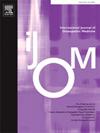Osteopathy educators' and researchers’ perspectives on artificial intelligence in academia: A cross-sectional study
IF 1.5
4区 医学
Q2 MEDICINE, GENERAL & INTERNAL
引用次数: 0
Abstract
Background
Artificial intelligence (AI) is increasingly being integrated into healthcare education and research, yet little is known about how AI is perceived within osteopathy. To the best of our knowledge, this is the first cross-sectional study to examine AI perspectives specifically among osteopathic educators and researchers, providing fresh insights into technology adoption within this healthcare discipline.
Methods
A cross-sectional survey was conducted between December 2023 and February 2024 among osteopathic educators and/or researchers through snowball sampling. The survey collected data on AI-related knowledge, usage in educational and research contexts, attitudes toward AI, perceived risks, and necessities challenges. Principal Component Analysis (PCA) was used to validate the structure of the survey. Demographic factors such as age, gender, occupation, and academic qualifications were analysed in relation to scores.
Results
190 respondents from 18 countries completed the survey. Participants demonstrated positive attitudes toward the role of AI in education and research, but acknowledged limited proficiency in its use. Usage of AI was higher among younger, male participants, with AI primarily used for personal organisation and research. Concerns about AI included risks of bias, over-reliance on technology, and potential replacement of human judgment. Participants with educational roles expressed fewer concerns about AI's risks compared to those outside of education. Knowledge of AI was not correlated with demographic factors, but attitudes and concerns about risks varied with age.
Conclusion
Osteopathic educators and researchers view AI as a beneficial tool for teaching and research, but face challenges in its effective implementation due to concerns about technology replacing human expertise and biases. Training, institutional support, and ethical guidelines are essential to foster the responsible integration of AI in osteopathy.
Implications for practice
- ●AI is underutilised in osteopathic education and research despite positive attitudes towards its potential.
- ●Educators are less concerned about AI risks, positioning them as key facilitators of responsible assimilation.
- ●Institutional policies should provide clear AI usage guidelines while addressing ethical and validity concerns.
- ●AI should support, not replace, human expertise, ensuring critical thinking remains central in education and research.
学术界骨科教育者和研究者对人工智能的看法:一项横断面研究
人工智能(AI)正越来越多地融入医疗保健教育和研究中,但人们对人工智能在骨科中的应用知之甚少。据我们所知,这是第一次在骨科教育者和研究人员中研究人工智能观点的横断面研究,为这一医疗保健学科中的技术采用提供了新的见解。方法采用滚雪球抽样的方法,于2023年12月至2024年2月对骨科教育工作者和/或研究人员进行横断面调查。该调查收集了人工智能相关知识、在教育和研究领域的使用情况、对人工智能的态度、感知风险和必要性挑战等方面的数据。主成分分析(PCA)用于验证调查的结构。年龄、性别、职业和学历等人口因素与得分的关系进行了分析。来自18个国家的190名受访者完成了调查。与会者对人工智能在教育和研究中的作用表现出积极的态度,但承认对其使用的熟练程度有限。人工智能在年轻男性参与者中的使用率更高,人工智能主要用于个人组织和研究。对人工智能的担忧包括偏见、过度依赖技术以及可能取代人类判断的风险。与教育以外的人相比,从事教育工作的参与者对人工智能风险的担忧更少。对人工智能的了解与人口因素无关,但对风险的态度和担忧随年龄而变化。骨科教育工作者和研究人员将人工智能视为教学和研究的有益工具,但由于担心技术取代人类的专业知识和偏见,人工智能在有效实施方面面临挑战。培训、机构支持和道德准则对于促进人工智能在整骨疗法中的负责任整合至关重要。●人工智能在骨科教育和研究中未得到充分利用,尽管人们对其潜力持积极态度。•教育工作者不太担心人工智能风险,将其定位为负责任同化的关键促进者。●机构政策应提供明确的人工智能使用指南,同时解决伦理和有效性问题。●人工智能应该支持而不是取代人类的专业知识,确保批判性思维仍然是教育和研究的核心。
本文章由计算机程序翻译,如有差异,请以英文原文为准。
求助全文
约1分钟内获得全文
求助全文
来源期刊
CiteScore
2.20
自引率
36.80%
发文量
42
审稿时长
3 months
期刊介绍:
The International Journal of Osteopathic Medicine is a peer-reviewed journal that provides for the publication of high quality research articles and review papers that are as broad as the many disciplines that influence and underpin the principles and practice of osteopathic medicine. Particular emphasis is given to basic science research, clinical epidemiology and health social science in relation to osteopathy and neuromusculoskeletal medicine.
The Editorial Board encourages submission of articles based on both quantitative and qualitative research designs. The Editorial Board also aims to provide a forum for discourse and debate on any aspect of osteopathy and neuromusculoskeletal medicine with the aim of critically evaluating existing practices in regard to the diagnosis, treatment and management of patients with neuromusculoskeletal disorders and somatic dysfunction. All manuscripts submitted to the IJOM are subject to a blinded review process. The categories currently available for publication include reports of original research, review papers, commentaries and articles related to clinical practice, including case reports. Further details can be found in the IJOM Instructions for Authors. Manuscripts are accepted for publication with the understanding that no substantial part has been, or will be published elsewhere.

 求助内容:
求助内容: 应助结果提醒方式:
应助结果提醒方式:


